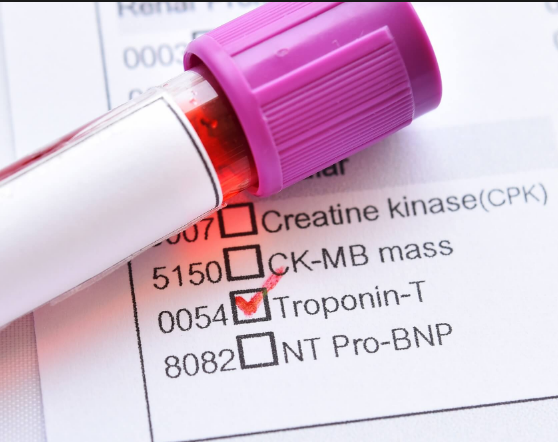- Home
- Editorial
- News
- Practice Guidelines
- Anesthesiology Guidelines
- Cancer Guidelines
- Cardiac Sciences Guidelines
- Critical Care Guidelines
- Dentistry Guidelines
- Dermatology Guidelines
- Diabetes and Endo Guidelines
- Diagnostics Guidelines
- ENT Guidelines
- Featured Practice Guidelines
- Gastroenterology Guidelines
- Geriatrics Guidelines
- Medicine Guidelines
- Nephrology Guidelines
- Neurosciences Guidelines
- Obs and Gynae Guidelines
- Ophthalmology Guidelines
- Orthopaedics Guidelines
- Paediatrics Guidelines
- Psychiatry Guidelines
- Pulmonology Guidelines
- Radiology Guidelines
- Surgery Guidelines
- Urology Guidelines
Scientists develop High-Sensitivity Troponin based risk assessment tool to predict Heart Attack risk in ED

It is a landmark study -The COMPASS-MI (Calculation of Myocardial Infarction Risk Probabilities to Manage Patients With Suspicion of Myocardial Infarction) study wherein scientists have developed a simple high sensitivity troponin based risk-assessment tool to predict prognosis of patients of suspected myocardial infarction visiting the Emergency Department.
Scientists have developed an online high-sensitivity troponin measurement tool which may offer an early prediction of a heart attack in patients visiting the emergency department and subsequent heart attack or death at 30 days. The performance of the tool was documented in a study published in the New England Journal of Medicine (NEJM).
Previous-generation troponin assays have been used as diagnostic and prognostic markers in acute coronary syndrome patients and for risk stratification to guide triage decisions and aid in treatment selection. With so much advancement in technology, a new era of troponin assays is approaching. High-sensitivity troponin assays may allow faster and more-sensitive evaluations.
Most prior investigations assessed a specific test (troponin I or troponin T) and a specific strategy (single, early repeated, or delayed repeated measurements) and are not applicable across all practice environments.
In this study, the scientists pooled the data from 15 international cohorts of patients presenting to the emergency department with symptoms suggestive of myocardial infarction. They have determined the concentrations of high-sensitivity troponin I or high-sensitivity troponin T at presentation and after early or late serial sampling. The diagnostic and prognostic performance of multiple high-sensitivity troponin cutoff combinations was assessed with the use of a derivation–validation design. A risk-assessment tool that was based on these data was developed to estimate the risk of index myocardial infarction (heart attack) and of subsequent myocardial infarction or death at 30 days.
Performance of the tool
- Among 22,651 patients (9604 in the derivation data set and 13,047 in the validation data set), the prevalence of myocardial infarction was 15.3%.
- Lower high-sensitivity troponin concentrations at presentation and smaller absolute changes during serial sampling were associated with a lower likelihood of myocardial infarction and a lower short-term risk of cardiovascular events.
- For example, high-sensitivity troponin I concentrations of less than 6 ng per liter and an absolute change of less than 4 ng per liter after 45 to 120 minutes (early serial sampling) resulted in a negative predictive value of 99.5% for myocardial infarction, with an associated 30-day risk of subsequent myocardial infarction or death of 0.2%; a total of 56.5% of the patients would be classified as being at low risk. These findings were confirmed in an external validation data set.
Based on the performance of the tool and results of the study, the scientists conclude that the risk-assessment tool, developed to integrate the high-sensitivity troponin I or troponin T concentration at emergency department presentation, its dynamic change during serial sampling, and the time between the obtaining of samples, can be used to estimate the probability of myocardial infarction on emergency department presentation and 30-day outcomes.
For further reference, please click on the link
https://doi.org/10.1056/

Disclaimer: This site is primarily intended for healthcare professionals. Any content/information on this website does not replace the advice of medical and/or health professionals and should not be construed as medical/diagnostic advice/endorsement or prescription. Use of this site is subject to our terms of use, privacy policy, advertisement policy. © 2020 Minerva Medical Treatment Pvt Ltd